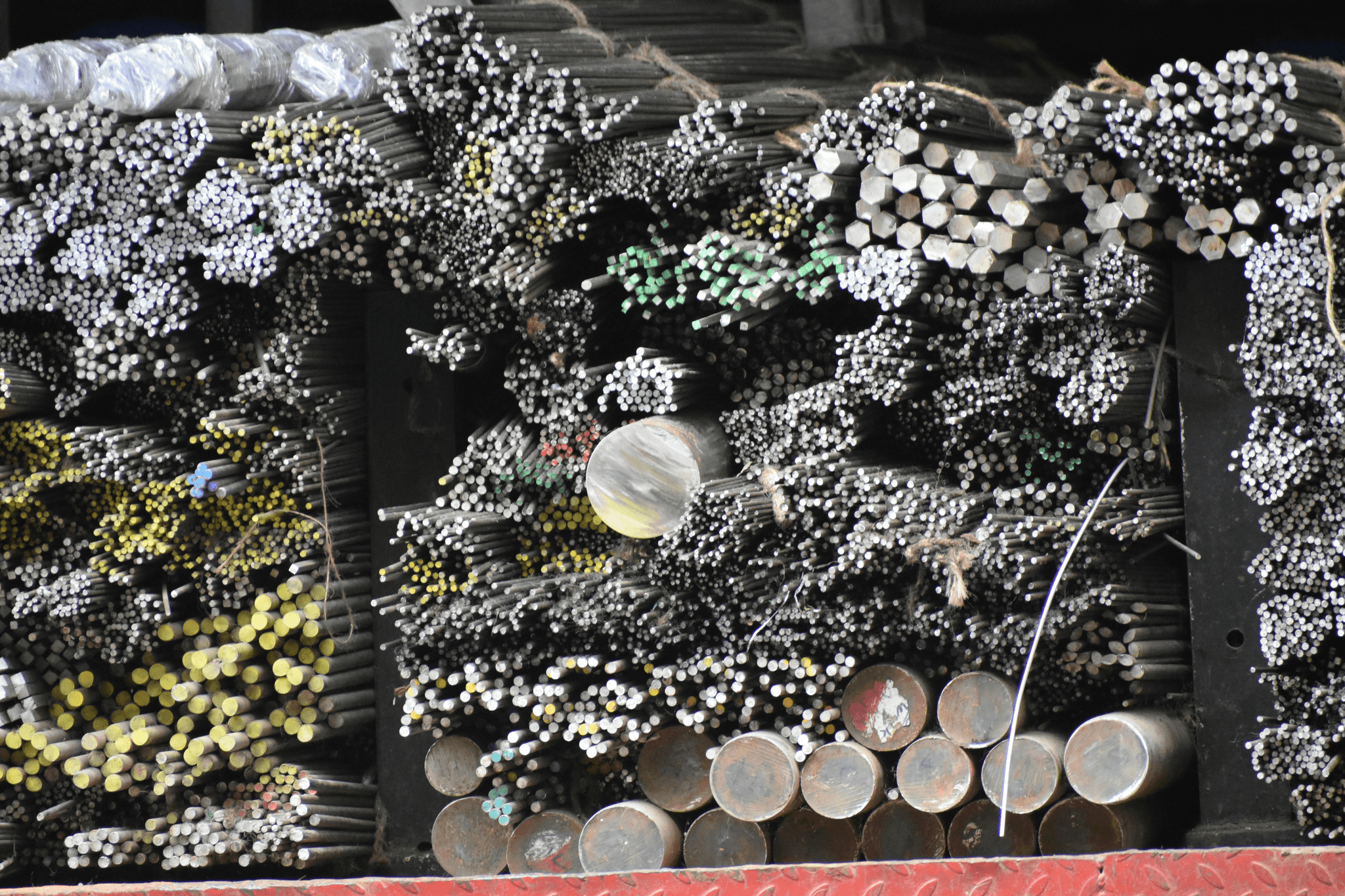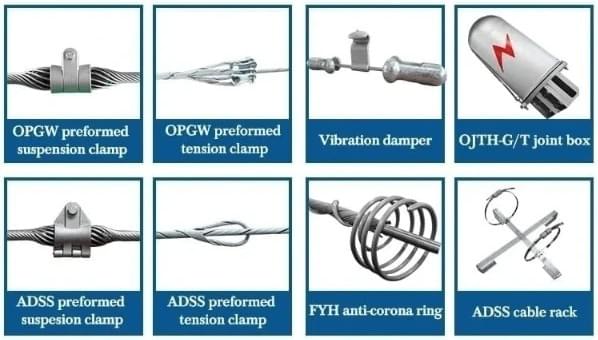Introduction

Choosing the right connector matters more than you might think. The wrong wire clamp connector can lead to poor performance, increased risk of accidents, or even costly repairs down the line. Whether you're tackling a DIY project or working on professional installations, having the right tools and knowledge is crucial for ensuring safety and efficiency.
The variety of wire connectors available today is astounding, ranging from basic plastic options to robust steel wire clamp connectors designed for heavy-duty applications. With such a wide selection at your disposal, it’s important to understand what each type offers and how they fit into your specific needs. As we delve deeper into this guide, we’ll explore everything from wire clamp connector sizes to installation tips that will help you connect with confidence.
Types of Wire Clamp Connectors

Insights into Common Types
Common types of wire clamp connectors include screw clamps, spring clamps, and toggle clamps. Screw clamps are popular due to their reliability; they use screws to tighten around wires, providing a firm grip. Spring clamps are more flexible and can quickly secure wires without needing tools, while toggle clamps offer a unique locking mechanism that ensures stability during use.
What are wire clamps called in different contexts? Depending on your industry or application, you might hear them referred to as cable ties or wire holders. Regardless of the name, their primary function remains the same: they keep your wires neatly organized and securely connected.
Differences Between Steel and Plastic Clamps
When deciding between steel wire clamp connectors and plastic ones, consider the environment where they'll be used. Steel clamps excel in strength and durability; they're perfect for heavy-duty applications where maximum support is needed. On the flip side, plastic clamps are lightweight and resistant to corrosion but may not withstand extreme loads as effectively as their steel counterparts.
Additionally, steel wire clamp connectors often have a higher resistance to heat compared to plastic options. However, if you're concerned about weight or aesthetics in less demanding environments, plastic might just be your best bet! Ultimately, choosing between these materials depends on your specific application requirements.
Specialty Wire Clamp Connector Applications
Specialty wire clamp connector applications cater to unique needs across various industries—from automotive wiring systems to home electrical projects. For instance, some connectors are designed specifically for high-voltage applications or marine environments where moisture resistance is critical. Others may focus on minimizing vibration in machinery or providing additional insulation against electrical interference.
Understanding how do you clamp wire connectors effectively involves knowing which type suits your application best—whether that’s securing loose cables in an automotive engine bay or organizing wires behind your entertainment center at home. The right choice not only enhances safety but also contributes significantly to overall performance and longevity of connections.
Determining Wire Clamp Connector Sizes

When working with wire clamp connectors, understanding the sizes is crucial for achieving secure and reliable connections. Selecting the right size ensures that your wire clamps will hold firmly without damaging the wires or creating loose connections. In this section, we’ll explore how to measure wire sizes properly, find the perfect fit for your project, and offer recommendations based on different wire gauges.
How to Measure Wire Sizes Properly
To accurately determine which wire clamp connector to use, you first need to measure the diameter of your wires correctly. Use a caliper or a wire gauge tool; these instruments provide precise measurements in either inches or millimeters. Remember that what are wire clamps called in different contexts can also affect how you interpret these measurements, so always refer back to standard sizing charts for clarity.
Once you have your measurement, compare it against manufacturer specifications for various types of wire clamp connectors available on the market. This ensures you're not just grabbing any old connector off the shelf but rather choosing one that fits snugly around your specific wire type. Knowing how do you clamp wire connectors effectively starts with accurate measurements—so don’t skip this step!
Finding the Perfect Fit for Your Project
Finding the perfect fit means considering both the size of your wires and any specific requirements of your project. For instance, if you're working on heavy-duty applications involving steel wires or cables, a steel wire clamp connector may be necessary due to its superior strength and durability compared to plastic alternatives. On the other hand, lighter applications may benefit from more flexible options like plastic clamps.
Additionally, consider factors such as environmental conditions—will they be exposed to moisture or extreme temperatures? These details can influence which type of connector will perform best over time. Ultimately, selecting a suitable size and material ensures that you won’t have to deal with frequent replacements or failures down the line.
Recommendations for Different Wire Gauge
Generally speaking, smaller gauges (like 18-20 AWG) work well with lightweight plastic clamps designed specifically for those dimensions; these are often used in household projects or low-voltage applications.
For medium gauges (around 14-16 AWG), consider using heavier-duty plastic connectors or even steel options if extra strength is needed—especially in automotive or industrial settings where reliability is paramount. Larger gauges (12 AWG and above) typically require robust steel wire clamp connectors capable of handling significant loads without compromising safety.
By following these guidelines and keeping in mind what are the wire connectors called across different industries, you'll be well-equipped to make informed decisions about which types of connectors best suit your needs.
Connecting with Confidence: Installation Tips

How Do You Clamp Wire Connectors Effectively?
To effectively clamp wire connectors, start by selecting the appropriate wire clamp connector sizes for your project. Measure the diameter of your wires accurately; this ensures that you choose a connector that fits snugly without being too tight or loose. Once you've got the right size, position the wire in the connector and apply even pressure while tightening it down—this helps create a solid connection.
It's also important to consider what are wire clamps called in different contexts; terms like wire cable clamps or simply clamps might come up depending on your industry. Always double-check that you're using the correct type of connector for your specific application, as this can impact both performance and safety. Remember, an effective installation is not just about getting it done; it's about doing it right!
Best Practices for Secure Connections
Best practices for securing connections with steel wire clamp connectors include ensuring clean contact surfaces before clamping down. Dirt, corrosion, or other contaminants can weaken connections and lead to failures over time. Additionally, when using multiple wires within a single connector, make sure they are all aligned properly to avoid any uneven pressure during tightening.
Another tip is to periodically check your connections after installation—this is especially vital in environments where vibration or movement may occur frequently. If you notice any signs of loosening or wear on your wire clamp connectors over time, don't hesitate to re-tighten them as needed! Consistent maintenance not only prolongs the life of your connections but also enhances overall safety.
Troubleshooting Common Installation Issues
Even with careful planning and execution, installation issues can arise when working with wire clamp connectors. One common problem is over-tightening; while you want a secure fit, cranking down too hard can damage both the wires and the connector itself! If you find that your wires are slipping out despite using proper sizes and techniques, check if you're using compatible materials—certain plastic clamps may not hold up as well under stress compared to their steel counterparts.
If you’re wondering what are the wire connectors called when they fail to provide adequate support? They might be referred to as faulty or ineffective clamps—definitely not what you want! Should troubleshooting reveal persistent issues despite following best practices, consider consulting product manuals or seeking advice from professionals who specialize in wiring solutions.
Essential Factors to Consider

When selecting a wire clamp connector, there are several essential factors to keep in mind. Understanding the terminology and environmental conditions can significantly impact the effectiveness of your connections. Additionally, evaluating the strength and durability of your chosen connectors will ensure they meet project demands.
What Are Wire Clamps Called in Different Contexts?
The term wire clamp connector can vary widely depending on industry or application. In electrical contexts, these connectors might be referred to as wire connectors, while in plumbing or construction, you might hear them called cable clamps or simply clamps. Understanding these different terminologies is crucial because it helps you communicate effectively with suppliers and professionals when sourcing the right products for your needs.
Environmental Factors Affecting Your Choice
Environmental conditions play a significant role in determining which wire clamp connector is best suited for your project. For instance, if you're working outdoors or in damp environments, you'll want to consider corrosion-resistant options like steel wire clamp connectors that can withstand moisture and rust. Similarly, if you're dealing with extreme temperatures or exposure to chemicals, selecting a durable plastic option may be more appropriate for ensuring longevity and reliability.
Evaluating Strength and Durability
When it comes to wire clamp connector sizes and types, strength and durability are paramount considerations. You want a connector that not only secures wires effectively but also stands up against tension and stress over time. Steel wire clamp connectors often provide superior strength compared to their plastic counterparts; however, choosing the right material will depend on your specific application requirements—balancing weight, flexibility, and resistance is key for optimal performance.
Top Brands and Their Offerings

When it comes to wire clamp connectors, the market is filled with various brands that promise quality and reliability. Each brand offers unique features that cater to different needs, making it essential for consumers to do their homework before making a choice. In this section, we’ll dive into some top brands, highlight their offerings, and see what users are saying about their products.
Spark Fittings’ Quality Products
Spark Fittings has carved a niche in the world of wire clamp connectors by providing durable and efficient solutions for various applications. Their steel wire clamp connectors are particularly popular due to their exceptional strength and reliability in demanding environments. Whether you're looking for standard sizes or custom options, Spark Fittings ensures that you find the right fit for your project needs.
Additionally, Spark Fittings offers an extensive range of wire clamp connector sizes designed to accommodate different wire gauges seamlessly. This attention to detail means you won’t have to worry about compatibility issues when using their products. Many users rave about the ease of installation; they often ask, “How do you clamp wire connectors?”—and with Spark’s intuitive design, it's straightforward!
Conclusion
In wrapping up our exploration of wire clamp connectors, it's clear that selecting the right connector is crucial for ensuring reliable and safe electrical connections. With a variety of options available, understanding what are wire clamps called in different contexts can help you make informed decisions. Remember that factors like size, material, and application play significant roles in your choice of wire clamp connector.
Key Takeaways for Wire Clamp Selection
When choosing a wire clamp connector, consider the specific application and environment where it will be used. For instance, steel wire clamp connectors offer exceptional strength for heavy-duty applications, while plastic options might be more suitable for lighter tasks. Additionally, understanding wire clamp connector sizes ensures you find the perfect fit for your project needs.
Ensuring Safety with Proper Connectors
Safety should always be a top priority when working with electrical components; thus, knowing how do you clamp wire connectors effectively is essential. Proper installation techniques can prevent potential hazards such as short circuits or loose connections that could lead to equipment failure or accidents. Regular inspections can also help identify any wear or damage to your wire connectors over time.
Final Thoughts on Wire Connection Solutions
Ultimately, the right choice of a wire cable clamp not only enhances performance but also contributes to the longevity of your projects. Whether you're dealing with residential wiring or industrial setups, being informed about what are the wire connectors called and their respective applications will streamline your efforts significantly. Embrace these insights to ensure you connect with confidence in all your wiring endeavors.

